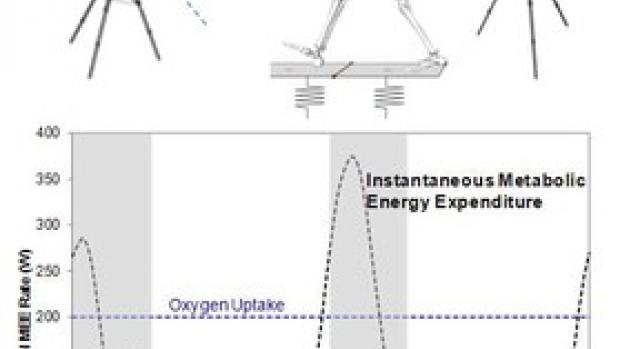Novel Computational Approach Aims to Improve Prosthetics and Aid Troops

Metabolic energy expenditure is a critical measure of human motion, and ascertaining detailed information about how the human body moves can result in a wide array of scientific, clinical, and engineering applications. These include exoskeletons with the potential to boost the strength and endurance of soldiers in the field and more efficient and affordable prosthetic limbs.
Assistant Professor of Mechanical Engineering Joo H. Kim of the NYU School of Engineering has won a three-year, $350,000 National Science Foundation grant to develop a novel joint-based method of modeling and computing human metabolic energy expenditure.
Traditional methods of prediction are based on muscle — rather than joint — activity, and those methods pose several difficulties: Because of the large number of unknown variables and interactions, a muscle-by-muscle examination is exceedingly complex and often inaccurate. Additionally, the equipment used in experimental measurement is unwieldy and can be used to measure only indoor activities performed at a steady pace, with a limited range of motion.
Kim’s computational model, by contrast, takes a novel engineering approach with mathematical rigor to overcome those limitations. It integrates the laws of thermodynamics and the principles of complex system dynamics, and enables real-time calculations of instantaneous metabolic rate. His studies are expected to result in an algorithm (which he intends for open-source release) that will optimize lower-limb prosthetic design and minimize the metabolic cost of walking with a prosthetic limb.
Given the great demand for prostheses — one advocacy group, the Amputee Coalition, estimates that more than 1.6 million people in the U.S. alone have some type of limb loss — Kim’s algorithm could resolve several major hurdles to their use, making the devices more comfortable, efficient, and affordable.




